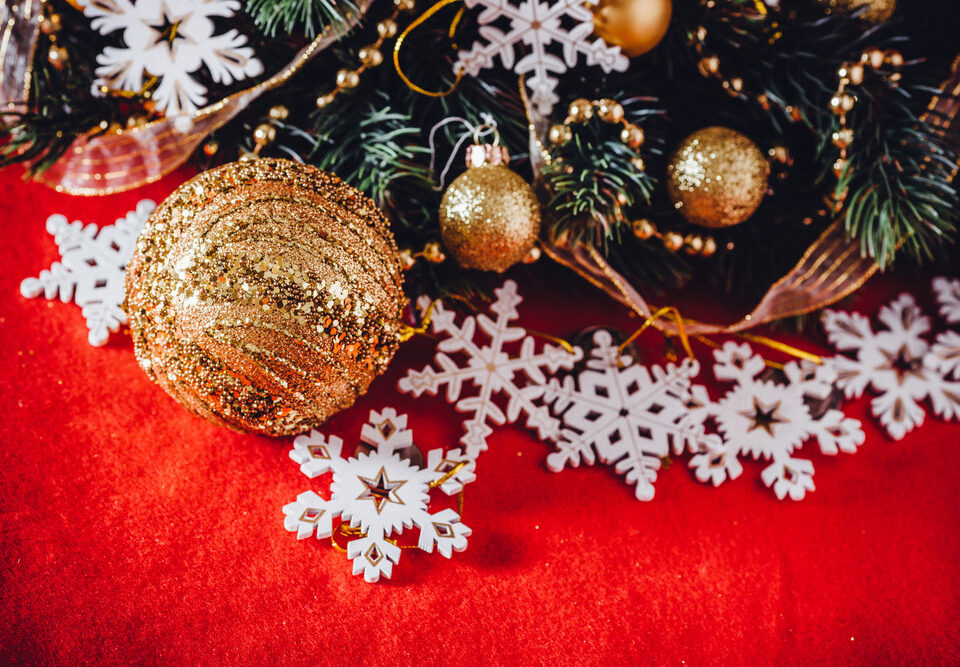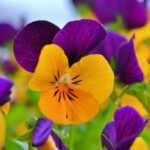
5 Hardy Flowers to Plant in Southern Michigan this Spring
April 22, 2024
The Rigorous Quality Testing this Michigan Garden Center Uses to Grow the Highest Quality Plants
May 21, 2024With spring finally arriving in southern Michigan, you may be wondering what you should plant in your Downriver region garden. Well, we’ve got some showstopping plants that will help you create a stunning landscaping display. Here are our 5 favorite annuals to plant in southern Michigan this spring.
1. New Guinea Impatien
New Guinea Impatiens make for an excellent color display because they are large and showy. Their star-shaped flowers come in yellow, blue, orange, pink, lavender, purple, red, and white. Their striking, dark green foliage can be solid or be variegated with burgundy. These leaves make the colorful flowers pop for a stunning addition to your landscaping.
New Guinea Impatiens look great in hanging baskets and can add spots of color to an outside living area. They also work well as garden borders or container flowers. Some varieties even have a delicate perfume to them.
How, Where, and When to Plant
New Guinea Impatiens need full or partial sun, and these flowers love areas that get sunlight in the morning and then shade in the afternoon. They also need well-draining soil that still holds in moisture.
Make sure to plant them after the danger of frost has passed. Remember that southern Michigan’s spring last frost date is April 28th.
Care
New Guinea Impatiens require a lot of water, so keep their soil evenly moist. However, do not allow them to become waterlogged. Also, avoid watering them from the top so that you don’t get their flowers or leaves wet. A drip hose may be best for this.
These flowers need slightly acidic soil and you should fertilize them once a month with an all-purpose, water-soluble fertilizer.
Deadhead (meaning cut off the dead flowers) as these plants grow in your southern Michigan garden, and prune off any leggy stems or stems that are producing more foliage than flowers. You want the plant’s energy to go towards creating flowers rather than producing foliage.
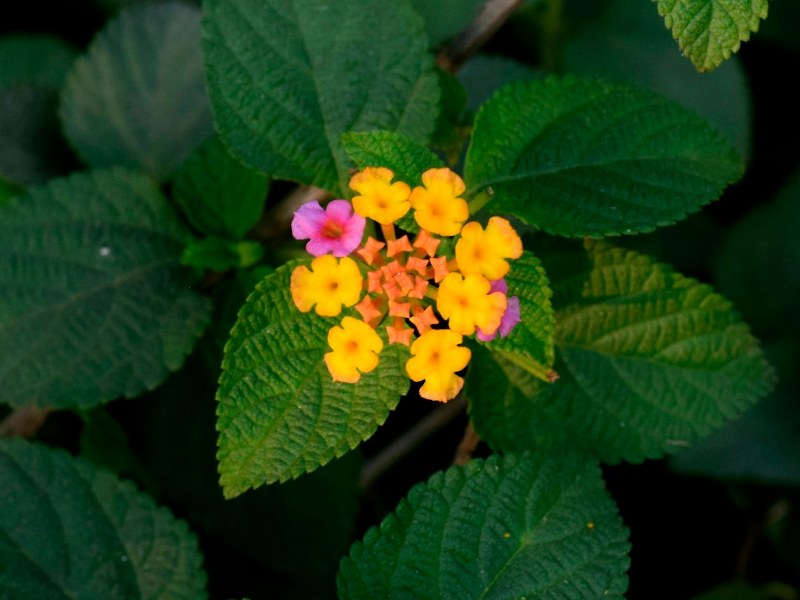
Yellow and pink lantana flowers on a background of emerald green leaves.
2. Lantana
Lantanas are clusters of tiny flowers that bloom all summer long. They primarily attract bees and butterflies in Michigan, but lantanas are good flowers for all southern Michigan pollinators. They are also rabbit- and deer-resistant.
Lantana come in a variety of colors including white, yellow, orange, pink, and red. You can find solid-colored or multicolored lantanas. Ask us about our ombre lantanas!
How, Where, and When to Plant
Lantanas need full or partial sunlight. But these easy-to-care-for flowers grow in any garden soil, and they are drought and heat tolerant too.
Lantanas make for attractive hanging baskets, container flowers, bedding flowers, or as ground cover.
Plant lantana after the spring last frost date in southern Michigan.
Care
Lantanas need a lot of water. So, fully saturate the soil when watering, but limit getting any water on the foliage. Then, let the soil dry to the touch before watering again.
Fertilize your lantana plant once a month with an all-purpose, water-soluble fertilizer.
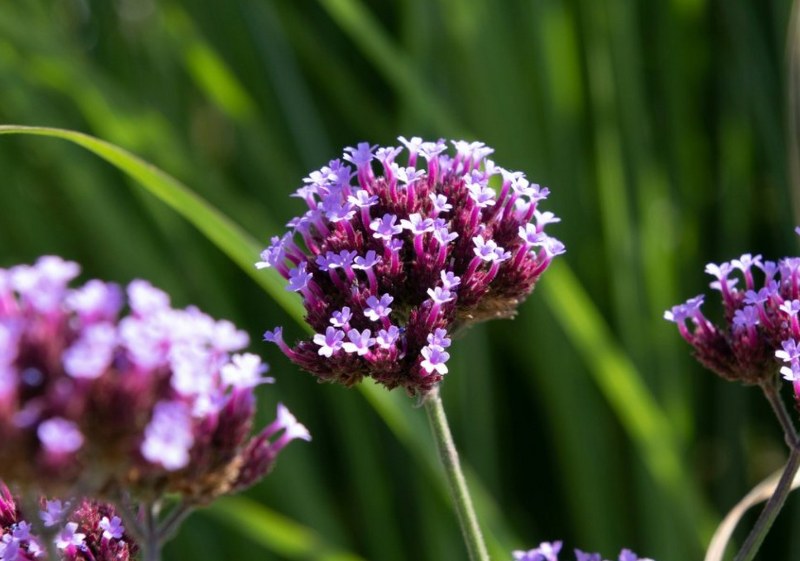
Purple verbena flowers that are beneficial for pollinators in Michigan.
3. Verbena
Verbena is an excellent spreading plant that blooms in the spring, summer, and fall. There are over 250 species of verbena, and verbena’s flowers come in a variety of colors including white, pink, purple, lavender, red, and blue. They can be solid or multicolored.
Verbena are deer-resistant and great plants for Michigan pollinators, such as hummingbirds, bees, and butterflies.
How, Where, and When to Plant
Grow verbena in full or partial sun. They will accept average quality soil.
Consider planting verbena as bedding flowers, container flowers, window box flowers, or as trellis flowers. Verbena also does well as ground cover planted with bulb plants.
Plant verbena in Michigan two weeks after spring’s last frost date, which is around May 12th in the Downriver region. Think of verbena as a Mother’s day flower.
Care
Verbena prefers moist, but well-drained soil. When watering, fully saturate the soil, avoid getting water on the foliage, and then let the soil dry to the touch before the next watering. Fertilize verbena once a month with an all-purpose, water-soluble fertilizer.
Verbena flowers bloom in a constant circle, meaning that new flowers bloom on top of spent flowers. So, you don’t need to deadhead these plants.
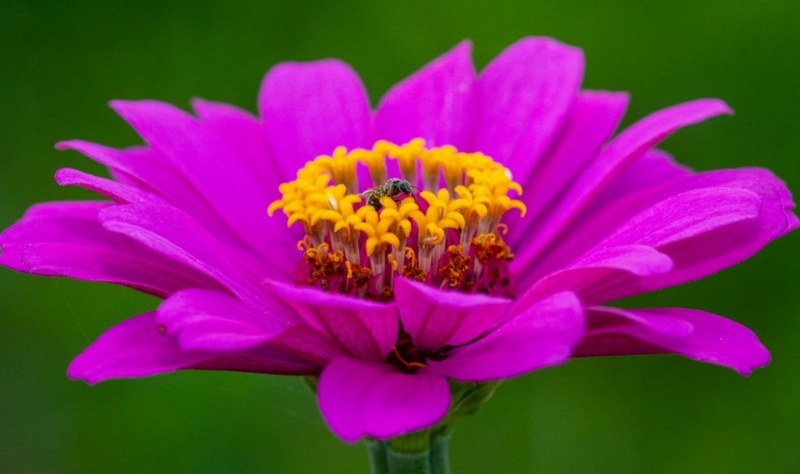
A purple zinnia flower with a bee nestled in it because zinnias are beneficial flowers for bees in Michigan.
4. Zinnia
First of all, we love the name “zinnia.” It’s just a fun name! Second, we love this flower!
Zinnias are easy to grow and have bright, cheery flowers with sturdy stems. Their flowers look like giant puffballs of bright colors, and they will make a stunning landscaping display in any Downriver, Michigan garden. Zinnia flowers can be solid, multicolored, striped, or speckled, and zinnia blooms can be single or double. Some common zinnia colors are yellow, pink, purple, orange, red, and white.
Zinnias are beneficial flowers for pollinators in southern Michigan (zinnia attracts butterflies like crazy!), so feel free to plant as many zinnias as your heart desires.
How, Where, and When to Plant
Zinnias are divas when it comes to sunlight because they need full sun. But, other than that, they are fairly low maintenance flowers.
Use zinnias as bedding flowers or border flowers. They also make for beautiful and long-lasting cut flowers.
Plant zinnias two weeks after spring’s last frost date in Michigan, which is around May 12th for the Downriver region.
Care
Zinnias like well-drained soil. Fully saturate the soil when watering, avoid getting water on the foliage, and then let the soil dry to the touch before the next watering. Fertilize zinnias once a month with an all-purpose, water-soluble fertilizer.
Deadhead zinnias to encourage new blooms and growth.
5. Torenia
Torenia are small plants with delicate, little flowers. This flower is also known as the “wishbone flower,” “clown flower,” and “bluewing.” Torenia flowers are trumpet-shaped and usually come in lavender, white, pink, burgundy, or blue. They often have a yellow “throat” as well.
How, Where, and When to Plant
Torenia flowers like shade or partial sunlight. Consider planting them as edging flowers for shady gardens. Torenia flowers also do well as container flowers, bedding flowers, and rock garden flowers.
Plant torenia flowers two weeks after spring’s last frost date in the Downriver region, Michigan.



